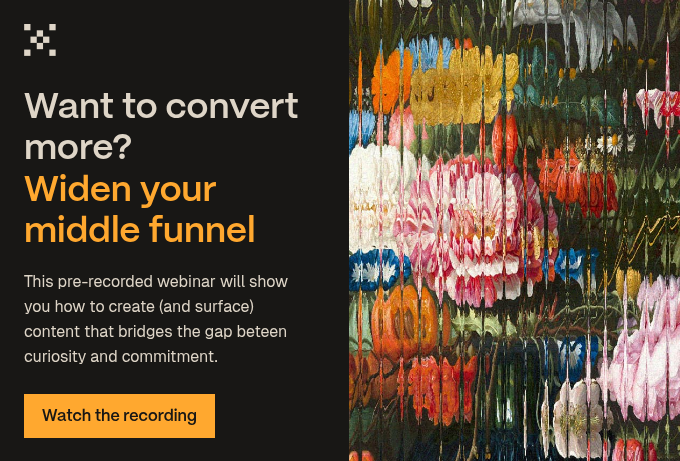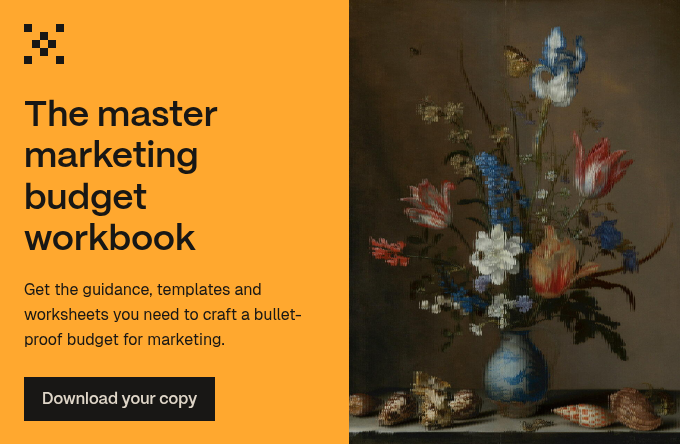Service Level Agreements are the secret sauce for ensuring marketing and sales are singing from the same song sheet. Qualifying inbound leads is an exercise in cooperation between departments.
When the handover from marketing to sales goes wrong, it can seem like a comedy of errors, but the reality is this: as more leads fall through the cracks, the more the relationships between departments can fracture.
The whole thing becomes a Greek tragedy. That song sheet? An off-key chorus of missed opportunities and irreconcilable differences.
Apologies, things got a bit dramatic there.
The ideal scenario
Sales and marketing, happily ever after. Speaking to marketers here, you’ll know that those of us in the biz talk a lot about ‘sales enablement’. Meaning, the work that marketing can do for the sales team to maximise the chance that inbound leads will turn into customers. Naturally, marketing can help with outbound activities, too, such as by providing sales collateral. Here, what we’re interested in is the process for handling inbound leads, using systems to manage that handover and assigning accountability at each step.
It’s worth noting that all-in-one tools like CRM software that is used by all departments underpin your sales enablement efforts. However, there are additional ways to encourage alignment, such as Service Level Agreements between departments. For example, the sales team might give the marketing team a commitment to follow up on high-priority form submissions within one working day.
Remember, tools are not processes. A CRM won’t solve your handover woes, but it may allow you to build better processes and use automation to make that crucial exchange of leads both pain and error-free.
The conversion cliff-edge
We’ve talked about brand consistency being a big part of differentiation. That consistency matters here, too. You want a smooth transition when handing leads over to sales (and back — sometimes a lead needs more time to engage with marketing materials before they are ready for a sales conversation. Repeat: the life of a lead is not always linear).
Marketers AND salespeople have a responsibility to define and agree on the steps between someone being a ‘lead’ and them becoming a customer. That’s called ‘qualification’. When that agreement isn’t established, you get the conversion cliff-edge, which looks a little something like this:
- 10,000 site visits >
- 100 new contacts >
- Err…
- Customers?
Seem familiar? You’re not alone.
Understanding lead temperature
One way to think about qualifying leads is how ready they are to buy. Marketing can help to enable sales by ‘taking the temperature’ of a lead and triggering activities or processes on that basis. Such a system is made easier using marketing automation.
- Cold lead: A lead that is in the system but hasn’t interacted with your site for a while. Maybe they don’t click on your emails much. Or, they’re so new that you don’t have enough information to know if they’re a good lead or not.
- Warm lead: A lead that has interacted with your site a few times recently. They’ve downloaded some offers; they’ve read a blog post or two. They’ve engaged with lead nurturing emails. They seem keen.
- Hot lead: Call them. Call them now. They want you to. They’ve read your entire website, clicked on every marketing email and told all their friends. That might be them at the door now.
Understanding a lead’s temperature gives you a lot of information with which to work. You can start to gather more data on crucial touchpoints along the buyer’s journey, refining your ‘map’ of said journey.
You get insight around which leads to prioritise for qualification, based on engagement. You can create triggers based on lead temperature for warmer leads to go to sales, so no one is wasting time trying to call an ice-cold lead.
That action, of course, helps to maintain friendly relations between departments. Sales will be more than happy to receive leads who, if contacted in that crucial moment of peak enthusiasm, know who is on the other end of the phone, have just finished reading a whitepaper that answered a bunch of questions and are thrilled to discuss a deal.
Service Level Agreements (SLAs)
Our top tip for enabling sales is simply to come to an agreement about the handling of such leads.
A shoddy handover process between departments means leads languish — unqualified and underworked — in your database. SLAs help to ensure that leads make it through the system. These are agreements of standards and processes between departments.
Marketing may agree to do a certain amount of lead nurturing before sending leads to the sales team, to ensure leads are ‘warm’. As a salesperson, you may want to hear from marketing if a lead has viewed core buying pages or downloaded a certain offer.
Once a lead is handed over to sales, you may want to add a lead to a suppression list so they get fewer marketing emails while you want them to pay more attention to sales emails. Or, you might want to run parallel marketing and sales strategies. If a lead isn’t ready to buy yet, then they will need to be removed from that list and put back into the marketing pool. You need to agree on what happens in all of these scenarios, and how marketing and sales automation feeds in to support each process.
For example, the marketing department may agree to notify sales once a lead has opened and clicked on any lead nurturing emails following a webinar. The SLA might be, ‘Webinar attendees tend to be some of our most enthusiastic, ready-to-buy leads. After a webinar, the marketing team will send 3 follow-up emails throughout the week to increase lead temperature, however will stop sending those emails once a lead clicks a link. That action triggers a task for a salesperson to qualify and contact that lead within 48 hours. Given we see 100 attendees a week and at least 10 will click on a link, sales agree to contact 10 people per webinar.’
Your SLAs may be more simple, or more detailed. Whatever floats your boat; just as long as you identify key handover moments and agree on how to enable the crossing, that transfer of souls over the river Styx. (And, somehow, we’ve ended up back in Ancient Greece.)
 Posted by
Maddy Leslie
Posted by
Maddy Leslie
.webp?width=1600&height=800&name=Frame%201%20(9).webp)





